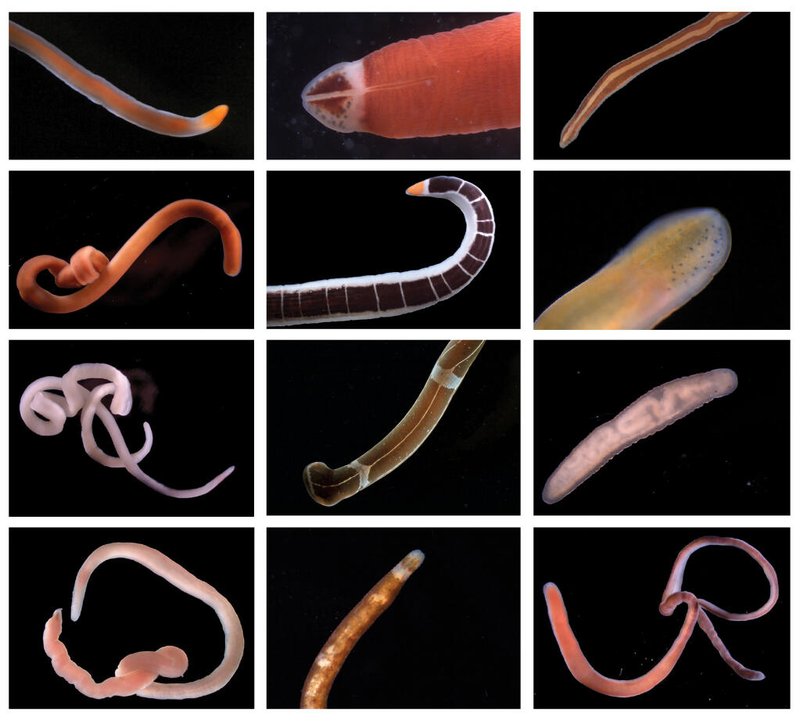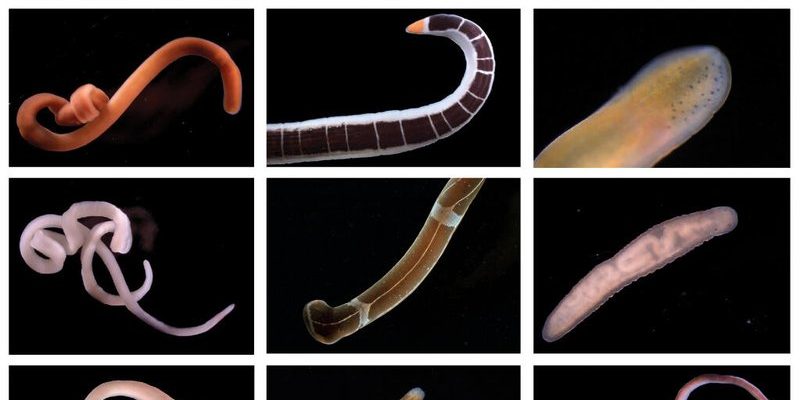
Imagine the ocean as a massive playground filled with different zones—each hosting unique life forms. Ribbon worms can be found in various marine environments, from sandy shores to rocky seabeds and even deep-sea trenches. So, if you’re curious about their habitats, buckle up! We’re diving deep into the world of ribbon worms and exploring where they thrive.
Understanding Ribbon Worms
Before we jump into where ribbon worms are found, let’s take a moment to understand what they are. Ribbon worms, or *Nemertea*, are soft-bodied, elongated animals. They can range from just a few millimeters to several meters long. These creatures are known for their stunning colors, with some sporting bright reds, yellows, and blues.
Here’s the thing: ribbon worms are not just beautiful; they also play an essential role in their environments. They help recycle nutrients and can be found in various marine ecosystems, making them critical to maintaining balance in these habitats. So, let’s explore the diverse locations where these intriguing creatures make their home.
Sandy Shores and Intertidal Zones
One of the most common places to find ribbon worms is in sandy shores and intertidal zones. This area is like the ocean’s edge, where the sea kisses the land during high tide and retreats during low tide. Here, you’ll find these worms hiding in the sand just beneath the surface.
Typically, ribbon worms prefer to burrow into the sand, using their slender bodies to create complex tunnels. This not only provides them shelter from predators but also helps them access food sources like tiny crustaceans and organic matter. At low tide, when the beach is exposed, you might even spot their burrow holes—think of these as little entrances to their hidden world!
Rocky Substrates and Coastal Environments
Another habitat where ribbon worms thrive is rocky substrates. In coastal environments, they can often be found clinging to the underside of rocks or nestled between crevices. This rocky landscape provides them with protection and a steady source of food, as they can feed on small invertebrates living in these nooks and crannies.
Imagine a bustling city of marine life where every rock is a little neighborhood. Ribbon worms take advantage of this rich biodiversity, using their long proboscis (a kind of extendable mouth) to catch prey. Their ability to adapt to different environments helps them survive, making rocky shores a hotspot for these intriguing creatures.
Estuaries and Brackish Water
Estuaries, where freshwater from rivers meets salty ocean water, are another haven for ribbon worms. These areas are teeming with nutrients, making them an ideal spot for various marine organisms. Ribbon worms appreciate the mix of fresh and saltwater, as it offers a diverse range of food options.
In estuaries, you might find ribbon worms hiding in muddy substrates, where they can easily burrow. This habitat allows them to stay safe from predators and access a constant supply of food. It’s like a buffet of organic matter that these worms can feast on, enabling them to thrive in this nutrient-rich environment.
Deep-Sea Environments
If you thought ribbon worms only live in shallow waters, think again! Some species have adapted to the depths of the ocean, where sunlight barely penetrates. Deep-sea environments offer unique challenges and opportunities. Here, ribbon worms can be found on the ocean floor, often in the sediment or amidst hydrothermal vent ecosystems.
These worms have evolved to withstand the immense pressure and cold temperatures found in deep water. They play a vital role in nutrient cycling, helping to break down organic material that falls from above. It’s a fascinating thought: these hidden creatures are thriving in one of the earth’s most extreme environments.
Coral Reef Ecosystems
While you might not typically associate ribbon worms with coral reefs, they can also be found in these vibrant marine ecosystems. Coral reefs are bustling cities of marine life, sheltering thousands of species, and ribbon worms are no exception.
In reefs, they often seek out crevices and small spaces between coral structures. These environments provide them with both food and protection. Ribbon worms can catch small fish and crustaceans that swim too close, making them effective hunters in this colorful habitat. The interplay between ribbon worms and the other marine organisms in the reef is an excellent example of how interconnected ocean life can be.
The Importance of Habitat Preservation
Understanding where ribbon worms are found is crucial, but it’s equally important to discuss why this matters. The habitats they rely on—like sandy shores, rocky substrates, estuaries, deep-sea environments, and coral reefs—are often under threat from human activities such as pollution, coastal development, and climate change.
By protecting these areas, we’re not just safeguarding ribbon worms; we’re supporting the entire marine ecosystem. Healthy habitats allow for diverse marine life to thrive, which, in turn, contributes to the overall health of our oceans. So, when we think about conservation efforts, let’s remember the little creatures like ribbon worms that play a big role in our blue planet.
Exploring Ribbon Worm Habitats
You might be wondering how to explore these fascinating habitats yourself. Depending on where you live, you might find opportunities for tide pooling along rocky coasts or even guided tours at estuaries. If you’re more of a diving enthusiast, exploring deeper waters could lead to encounters with ribbon worms in their natural environment.
When venturing into these marine ecosystems, it’s essential to be respectful and mindful of the environment. Always follow local guidelines, practice sustainable exploration, and leave the habitats as you found them. After all, we’re guests in these underwater worlds, and preserving them is up to us.
In conclusion, ribbon worms are truly remarkable organisms that inhabit a wide range of marine environments. From sandy shores to deep-sea trenches, these creatures play a vital role in maintaining the balance of marine ecosystems. As we learn more about their habitats, let’s commit to protecting them and ensuring that future generations can enjoy the wonders of the ocean.

